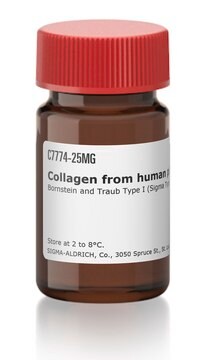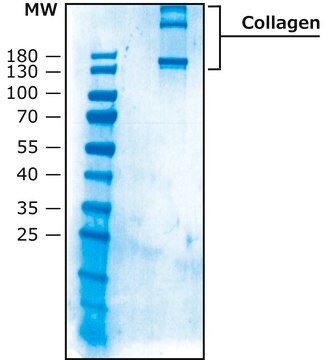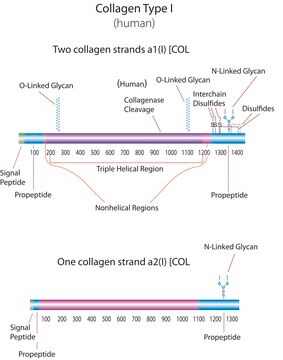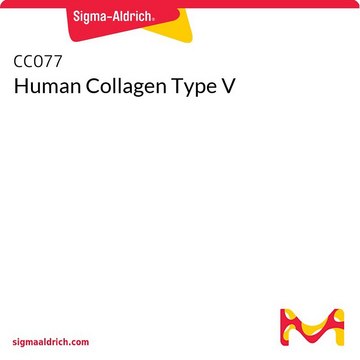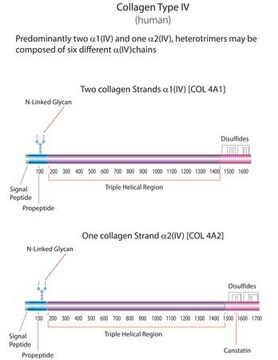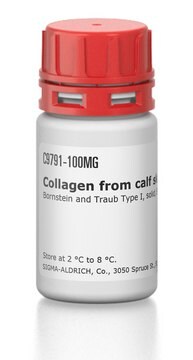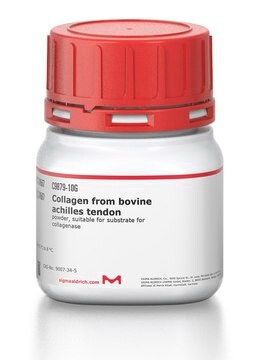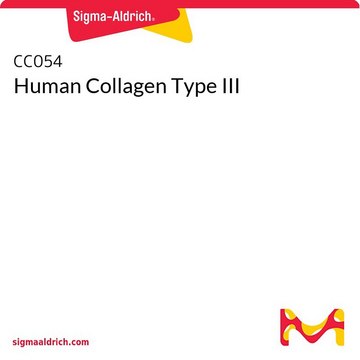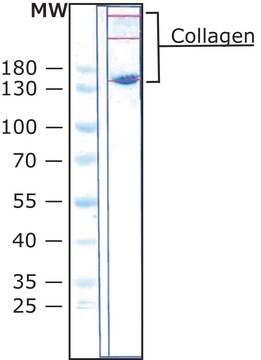C3657
Human Collagen Type V
from human placenta, powder, suitable for detection assays
About This Item
Prodotti consigliati
Nome del prodotto
Collagene, Bornstein and Traub Type V (Sigma Type IX), powder
Origine biologica
human placenta
Livello qualitativo
Stato
powder
Impurezze
HIV, hepatitis B and hepatitis C, none detected
Solubilità
aqueous acid: soluble
N° accesso UniProt
applicazioni
detection
Temperatura di conservazione
2-8°C
Informazioni sul gene
human ... COL5A1(1289)
Cerchi prodotti simili? Visita Guida al confronto tra prodotti
Componenti
Avvertenza
Nota sulla preparazione
Risultati analitici
Altre note
Codice della classe di stoccaggio
11 - Combustible Solids
Classe di pericolosità dell'acqua (WGK)
WGK 1
Punto d’infiammabilità (°F)
Not applicable
Punto d’infiammabilità (°C)
Not applicable
Dispositivi di protezione individuale
Eyeshields, Gloves, type N95 (US)
Scegli una delle versioni più recenti:
Certificati d'analisi (COA)
Non trovi la versione di tuo interesse?
Se hai bisogno di una versione specifica, puoi cercare il certificato tramite il numero di lotto.
Possiedi già questo prodotto?
I documenti relativi ai prodotti acquistati recentemente sono disponibili nell’Archivio dei documenti.
I clienti hanno visto anche
Il team dei nostri ricercatori vanta grande esperienza in tutte le aree della ricerca quali Life Science, scienza dei materiali, sintesi chimica, cromatografia, discipline analitiche, ecc..
Contatta l'Assistenza Tecnica.